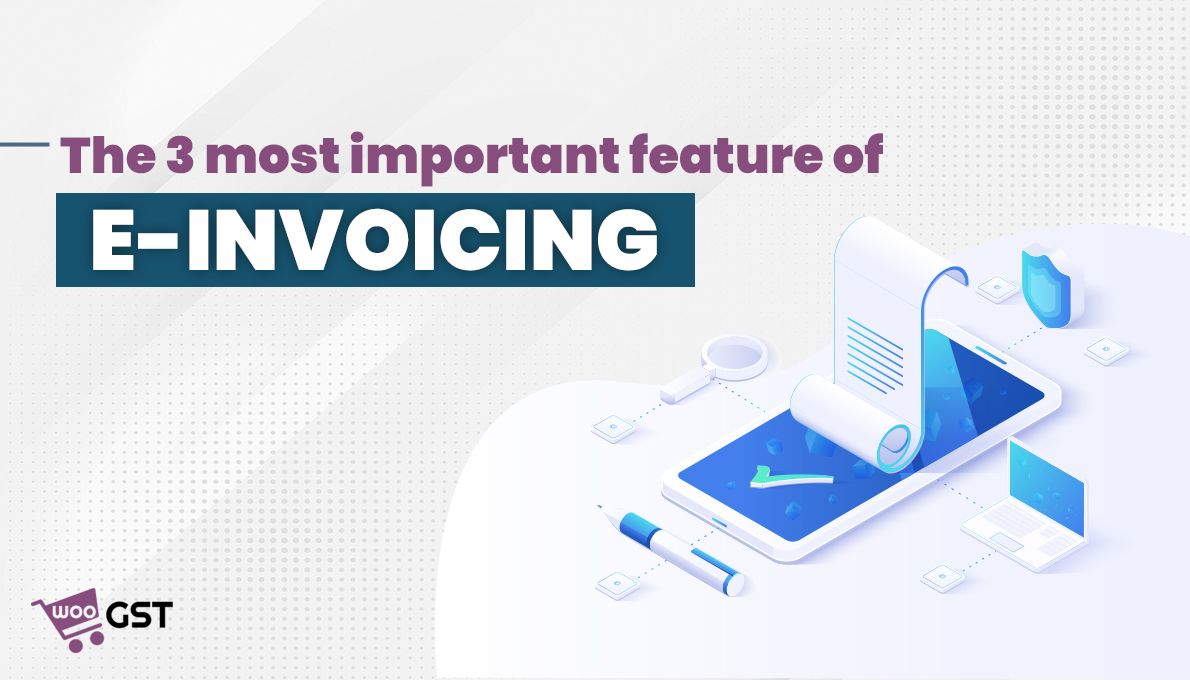
Digitising the financial process has proven to be a game changer in the e-commerce business. Among these digital changes, E-invoicing or electronic invoicing evolved as a cornerstone in streamlining financial workflow. It enhances the efficacy, minimizes the error, and ensures compliance and accuracy in the invoicing process.
Adopting E-invoicing means leveraging its key features.
Before moving towards the features let’s have an introduction to E-Invoicing.
Introduction to E-Invoicing
The GST council introduced E-invoicing or Electronic invoicing to revolutionise B2B invoice reporting for businesses.
It is a method of creating invoices using digital documents. E-invoices, divided between customer and supplier, undergo government tax site verification for utmost trust and security. The standardised format simplifies GST compliance.
To counter widespread tax evasion and fraud through fake invoices, the proposed e-invoicing system aims to eradicate these illegal practices.
Features of Invoice
1. Invoice Reference Number
The invoice reference number also called IRN is a unique number generated by the invoice registration portal using a hash algorithm. This algorithm considers specific parameters like the type of document, document number, financial year, and supplier GSTIN to generate this unique code. This makes sure that the supplier does not submit the same data twice a year. In general, it prevents the formation of duplicate IRN Numbers.
What is the Hash Algorithm?
A hash algorithm is a mathematical process that transforms input data, often alphanumeric, into a fixed-length string of numbers or characters. Its main objective is to generate a distinct “digest” or “hash value” representing the initial data.
For GSTN, specific input parameters are utilized in creating the hash, ultimately forming the IRN.
Parameters
- Type of documents
- Supplier GSTIN
- Document number
- Financial years
2. Digital Signature
In the domain of e-invoicing, the shift from physical to digital signatures marks a significant evolution toward efficiency and security. Though not mandatory, a Digital Signature (DSC) adds an extra layer of authentication, enhancing the credibility of the supplier’s digitally signed e-invoice. The validation process, carried out by the IRP using an IRP digital certificate, solidifies the proof of business transactions.
Under the IT Act, of 2000, adhering to its guidelines is key in establishing a DSC for e-invoicing.
Previously, GST regulations mandated physical signatures on all invoices, including credit and debit notes. However, individuals had the option to utilize digital signatures, provided they fulfilled the specific provisions outlined in the IT Act, of 2000.
Applicability of Digital Signature
Within the e-invoicing system, submitting an invoice to the Invoice Registration Portal (IRP) encompasses mandatory and optional parameters, among which the digital signature falls into the latter. The JSON payload of the invoice goes through validation and is signed by the IRP using an IRP digital certificate. This signed e-invoice stands as conclusive proof of the transaction for the seller.
When distributing the printed version of the e-invoice, the seller must furnish the QR code and the digital signature separately to the recipient. This practice ensures thorough verification of the document’s authenticity.
How to attach DCS to the invoice?
To accomplish this, you will need accounting software capable of producing the invoice’s JSON data. The software should also support DSC reading functionalities, along with the “emSigner” tool from GST installed and operational on your system.
After your accounting system generates the JSON payload of the invoice, it gets uploaded to the IRP.
Upon clicking the ‘Verify using DSC’ button, a selection of available digital signatures will appear. You will have the option to choose an authorized signature and proceed by clicking ‘Sign’.
3. QR Code
A QR code on invoices enables easy machine reading and offline verification by tax officers. Composed of specific details like supplier and recipient GSTINs, invoice number, date, value, line items, HSN code, and a unique IRN/hash, it facilitates swift and precise verification. Mandated by the GST Council for B2B taxpayers, QR codes on printed invoices enhance tracking and minimize tax evasion.
The QR code includes essential e-invoice details:
- Supplier’s GSTIN
- Recipient’s GSTIN
- Supplier-assigned invoice number
- Invoice generation date
- Invoice value (taxable and gross tax)
- Line item count
- Primary item’s HSN Code (with highest taxable value)
- Unique Invoice Reference Number (hash)
WooCommerce GST Plugin is the automated invoice generator for your WooCommerce store. With easy installation and activation of the plugin, you can generate invoices for your WordPress.
How can WooGST Plugin help your e-commerce business?
WooGST Plugin is a game-changer for handling invoices effortlessly. In today’s business landscape, staying abreast of technological advancements is crucial. Our plugin offers unmatched convenience, speed, and efficiency with the get-done of all your calculations of tax for e-commerce business.
By eliminating manual data input, the WooGST plugin significantly minimizes errors.
Beyond offering appealing templates, this plugin automates the entire invoice generation process, needing only minor adjustments before sending.
Gone are the days of complex Excel spreadsheets for invoice submissions. With this plugin, generating polished, professional WooCommerce GST invoices is a breeze, directly from your system.
Summary
In summary, the phased introduction of e-invoicing in India represents a revolutionary shift in B2B transactions. Through the integration of IRN, DSC, and QR codes, the system strives to elevate precision, legitimacy, and effectiveness, leading to decreased tax evasion and simplified record management. As businesses embrace these advancements, the invoicing scenario in India is poised for transformation, fostering a transparent and digitally empowered future.
All Rights Reserved. © 2023